What Do the Symbols on the New Zealand Flag Mean?
The New Zealand flag features the Union Jack, representing the country’s historical ties to the United Kingdom, and the Southern Cross constellation, symbolizing its location in the South Pacific and the sense of identity as a nation under the southern skies.
The symbols on the New Zealand flag represent important aspects of the nation’s identity and history.
The flag consists of two main elements:
- The Union Jack: This is the flag of the United Kingdom and reflects New Zealand’s origins as a British colony and its historical and constitutional ties to the UK.
- The Southern Cross: This is a constellation visible in the southern hemisphere and represents New Zealand’s geographical position in the world. It also signifies navigation and the country’s spirit of exploration.
Emblazoned with the Southern Cross and the Union Jack, the New Zealand flag encapsulates the nation’s British heritage and unique position in the celestial tapestry of the southern hemisphere.

Key Takeaway
The Southern Cross
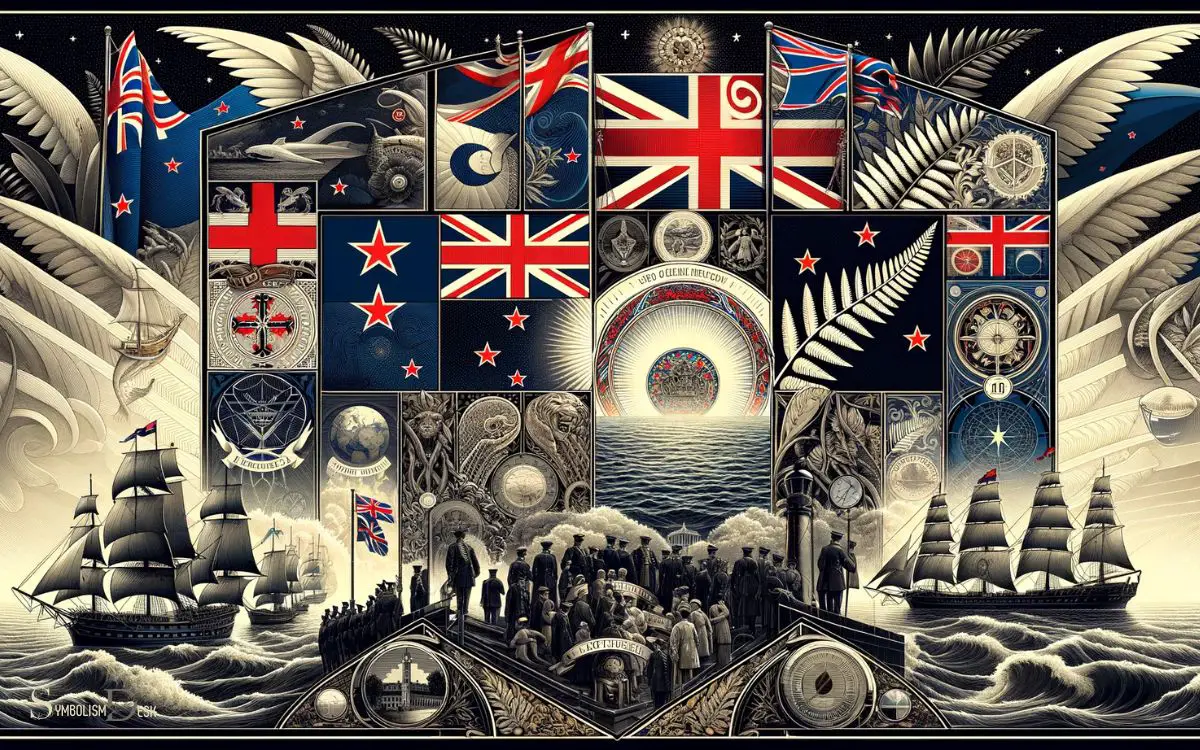
Exploring the significance of the Southern Cross on the New Zealand flag reveals its historical and cultural importance.
The Southern Cross, a constellation visible in the Southern Hemisphere, holds deep significance for New Zealand. It is a symbol that has long been used in navigation and is an important cultural symbol for the indigenous Māori people.
The Southern Cross on the flag consists of four five-pointed white stars with red borders. These stars represent the four brightest stars in the constellation and are arranged to depict their relative positions in the night sky.
The Southern Cross on the New Zealand flag not only symbolizes the country’s location in the Southern Hemisphere but also reflects its cultural heritage and connection to the land and sea.
Union Jack
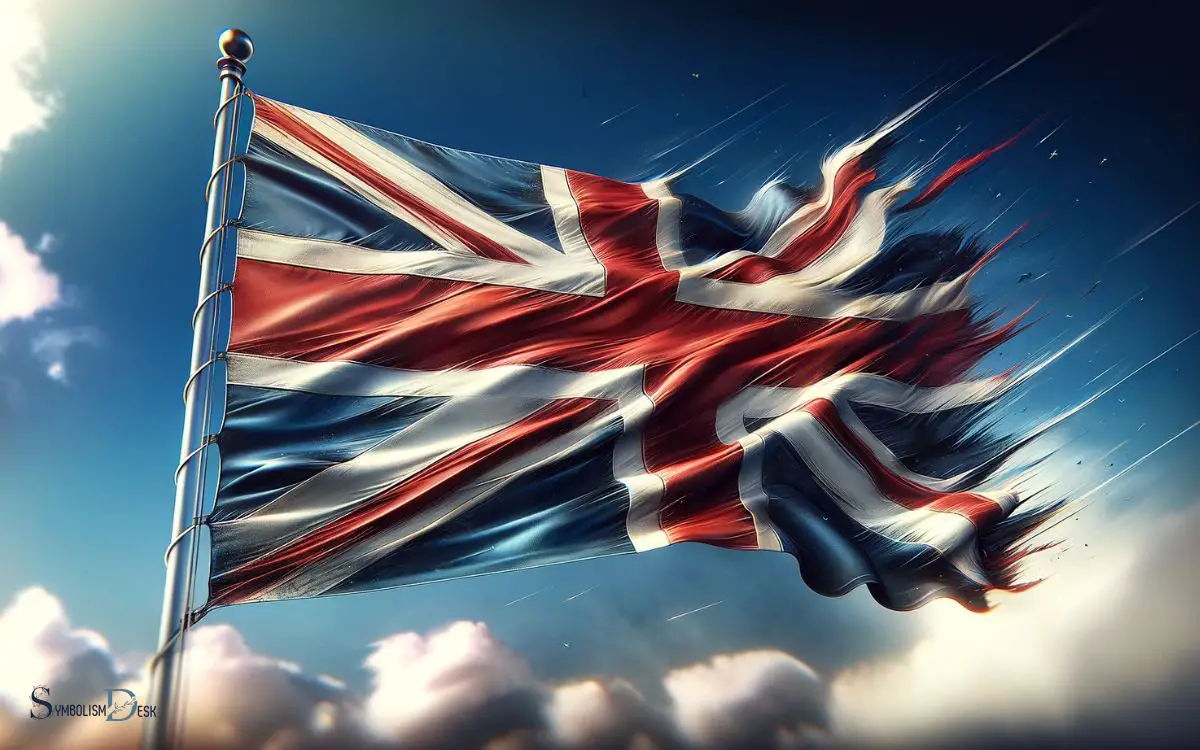
The presence of the Union Jack on the New Zealand flag signifies the historical and political ties between New Zealand and the United Kingdom, reflecting the country’s colonial past and ongoing connections to the British Commonwealth.
The Union Jack, which is the national flag of the United Kingdom, was incorporated into the New Zealand flag as a symbol of New Zealand’s status as a British colony.
Even though New Zealand is now an independent nation, the Union Jack remains on its flag, representing the continued relationship with the United Kingdom. This symbol also acknowledges the influence of British culture and governance on New Zealand’s development.
Despite ongoing debates about the appropriateness of retaining the Union Jack on the flag, it continues to serve as a reminder of New Zealand’s historical and political ties to the United Kingdom.
Red Ensign
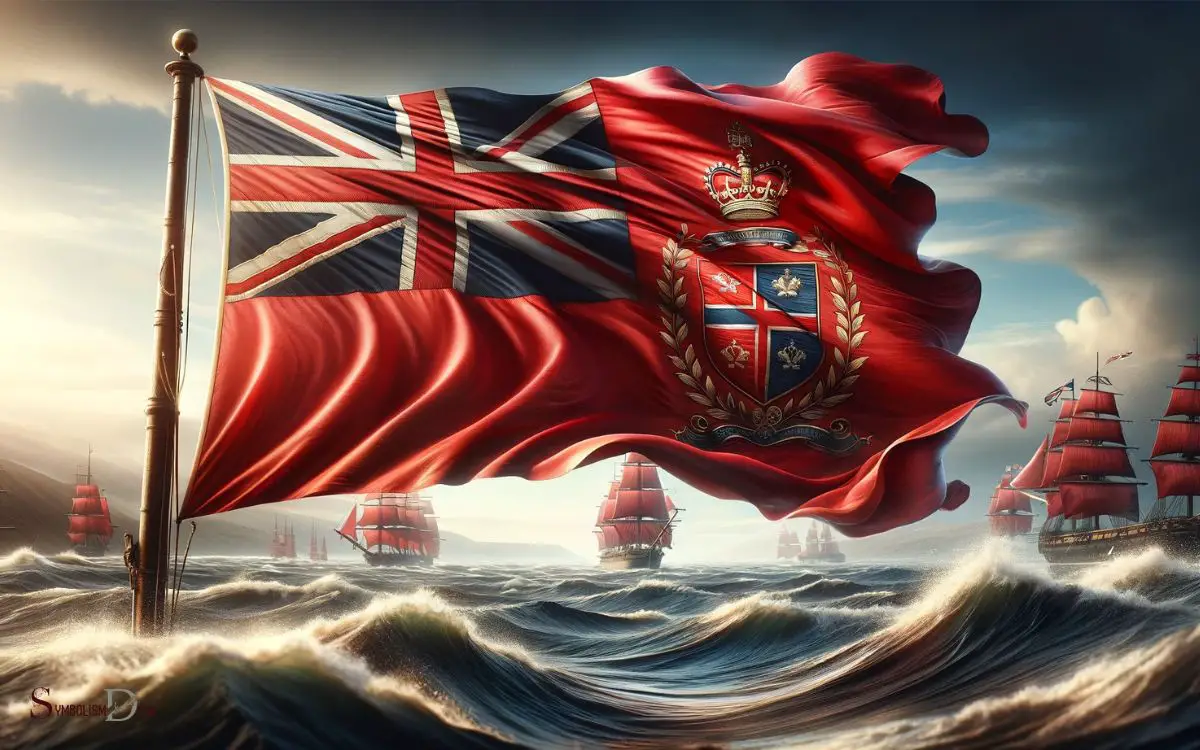
How does the inclusion of the Red Ensign on the New Zealand flag reflect the country’s historical connections to maritime trade and its ties to the British Empire?
The Red Ensign, historically used by British merchant vessels, symbolizes New Zealand’s maritime heritage and its significant role in global trade. As a former British colony, New Zealand adopted the Red Ensign as its civil ensign, signifying its allegiance to the British Empire.
The inclusion of the Red Ensign on the New Zealand flag serves as a reminder of the country’s seafaring past and its reliance on maritime commerce for economic prosperity.
| Symbol | Representation |
|---|---|
| Red Color | Historical ties to the British Empire |
| Union Jack | Connection to British heritage and influence |
| Maritime Usage | Importance of trade and seafaring in New Zealand’s history |
| Global Commerce | Signifies New Zealand’s participation in international trade |
The Red Ensign, alongside other elements on the flag, encapsulates New Zealand’s rich historical narrative and its place in the global community.
Silver Fern
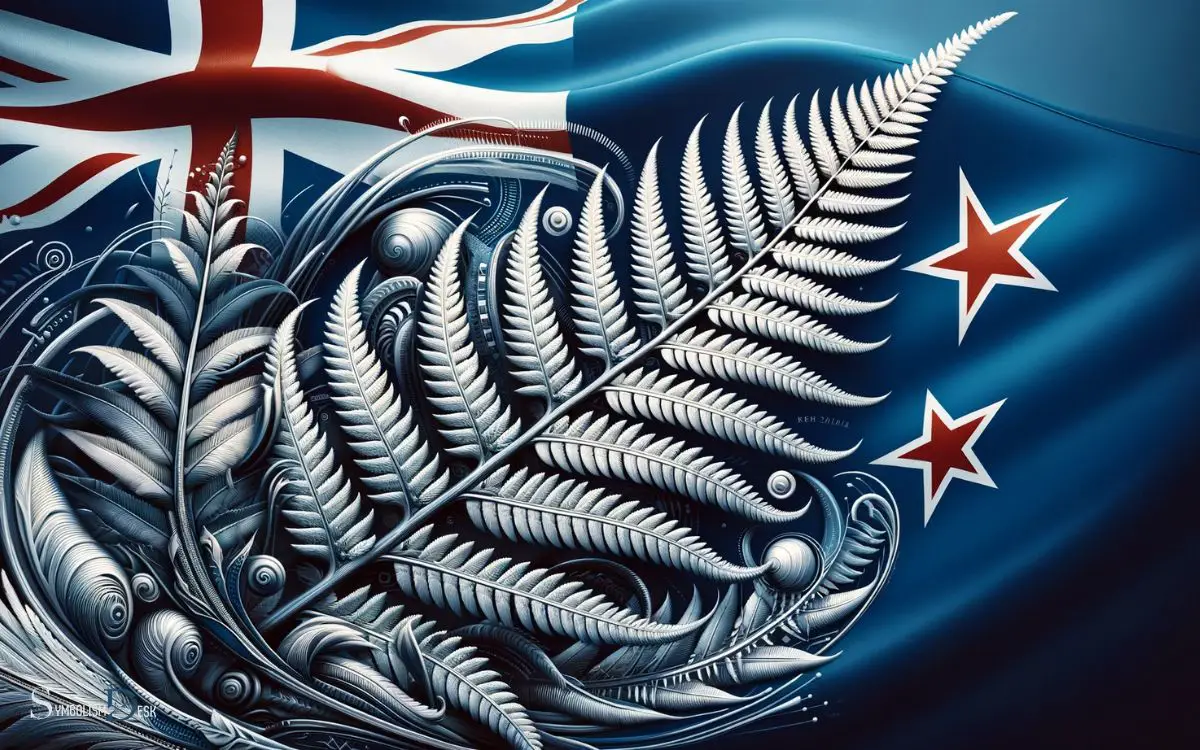
The Silver Fern, a prominent symbol on the New Zealand flag, represents the country’s unique flora and is emblematic of its national identity. The fern itself holds cultural significance for the indigenous Māori people and has become an iconic symbol of New Zealand.
The silver underside of the fern leaf is what gives it its name and distinguishes it from other fern species. This distinctive feature is captured in the flag’s design, symbolizing the resilience, strength, and sense of pride that New Zealanders associate with their country.
The Silver Fern also reflects the nation’s connection to nature and its commitment to environmental sustainability. Its inclusion on the flag serves as a powerful reminder of New Zealand’s natural beauty and the values that the country upholds.
What Do the Symbols on the PNG Flag Mean?
The symbols on the png flag represent aspirations. The traditional bird of paradise signifies cultural heritage and national pride. The Southern Cross constellation represents the country’s geographical location. The black emblem stands for the people’s courage and determination, while the red and yellow colors symbolize their vitality and richness. Together, these symbols on the flag depict the hopes and dreams of the people of Papua New Guinea.
What Do the Symbols on the New Zealand Flag Represent?
The symbols on the Japanese flag mean harmony and peace. However, the New Zealand flag is unique and does not have any specific symbols. It consists of a blue field with the Southern Cross constellation and the Union Jack in the canton. The Southern Cross represents New Zealand’s geographical location and the Union Jack represents its historical connection to Great Britain.
Historical Evolution
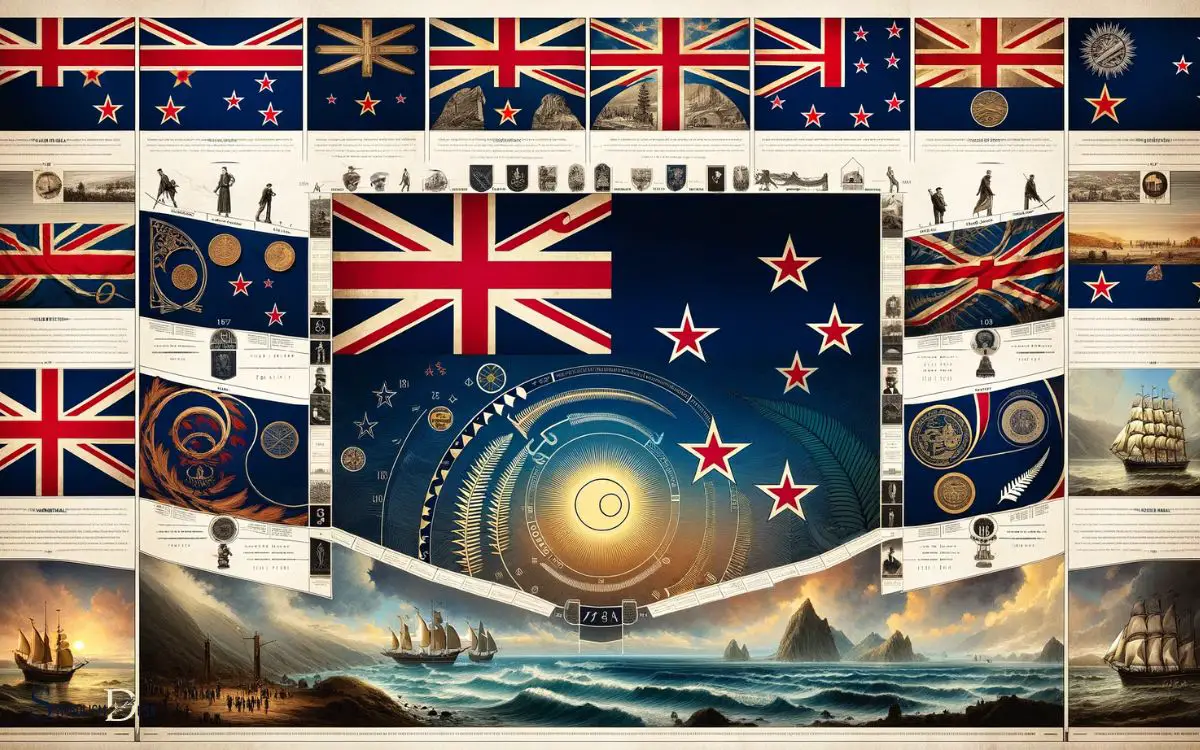
Throughout its historical evolution, the New Zealand flag has undergone several changes to reflect the nation’s shifting political and cultural landscape.
The following table provides an overview of the historical evolution of the New Zealand flag:
| Period | Flag Description |
|---|---|
| 1834-1840 | The United Tribes flag, representing the independent tribes of New Zealand under the Treaty of Waitangi. |
| 1840-1902 | The Union Jack, symbolizing New Zealand’s status as a British colony. |
| 1902-1953 | The flag featured the Union Jack and the four stars of the Southern Cross constellation, signifying New Zealand’s location |
| 1953-present | The current flag, incorporating the Union Jack and the Southern Cross, represents New Zealand’s identity as a nation. |
These changes reflect the country’s historical ties and evolving sense of national identity.
Conclusion
In conclusion, the symbols on the New Zealand flag hold significant historical and cultural importance. These symbols not only represent the indigenous Maori culture, but also the country’s history of British colonization. The fern, a widely recognized emblem of New Zealand, has become a symbol of national identity and is often associated with the country’s sporting teams. In contrast, the Australian flag symbol meanings differ, with the Southern Cross representing the national constellation and the Union Jack signifying the country’s ties to the United Kingdom. Despite their differences, both flags reflect the unique heritage and identity of their respective nations.
The Southern Cross represents the country’s location in the Southern Hemisphere, the Union Jack reflects its colonial history, and the Red Ensign signifies its maritime heritage.
The Silver Fern is a national emblem and symbol of New Zealand’s identity. The evolution of these symbols on the flag reflects the country’s changing relationship with its history and place in the world.
For example, the decision to remove the Union Jack from the flag in 2016 sparked national debate and reflection on New Zealand’s identity.






